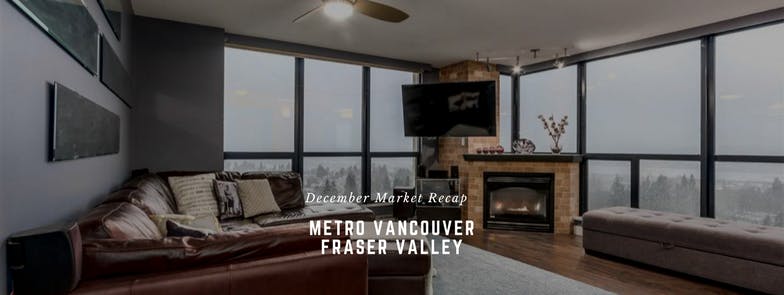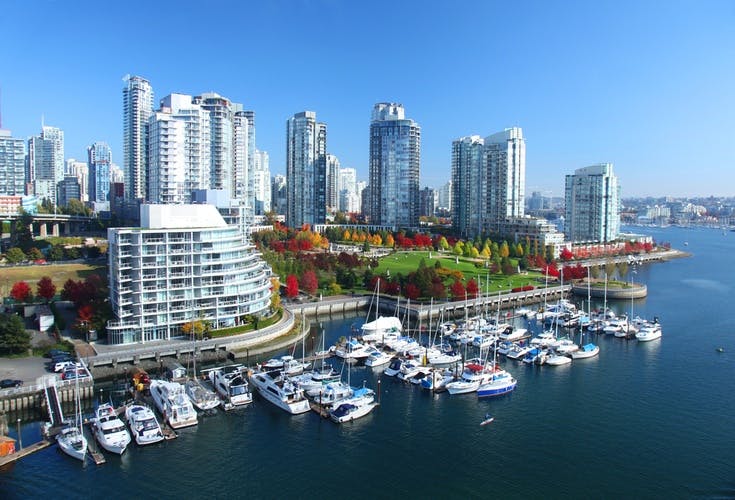OUR CURRENT RESIDENTIAL MARKET
As we move into the second quarter of 2018, I’m sure everyone is looking forward to more sunshine and fewer rainy days. The weather can be a factor in our outlook and affect our decision-making even on major transactions like buying or selling a residential property. That’s a good reason to pay close attention to some key market trends occurring in local prices and inventories. With so much recent news on new government regulations and taxes on property, it’s easy to develop negative views that are not wholly informed by the facts of the marketplace. Another thing that can contribute to unnecessary pessimism is an over-emphasis on longer term historical comparisons. Regular readers of my monthly newsletter get a picture of the marketplace which is as up-to-date as available statistics make possible, allowing them to understand the where and why of prevailing prices in a context that is relevant to current circumstances. I will continue to breakdown the market segments for each property type in the following geographical regions of Metro Vancouver and the Fraser Valley.
METRO VANCOUVER
In the past month of March there were total of 4,450 new listings in Metro Vancouver which was increase of 5.4 per cent over the preceding February. That’s good news for the active home seeker; yet, it’s fewer than the 4,762 listings that occurred in the same month one year ago. The latter statistic might be of interest in broader academic analysis of the Vancouver residential market, but it’s probably not going to affect a decision to buy or sell at the current time because the prevailing market psychology doesn’t believe that prices are going to move backwards in time. 00 For that reason, I am always talking to my clients to understand what they really want to know for the decisions that are important to them. And what I hear is that you wish to know about what is happening now, and in a context of what it points to in the near term. So here are my selected key metrics based on market activity tabulated on the end of last month.
Across all residential property types in Metro Vancouver there were 2,517 sales at the end of March. This was 14 per cent higher than the preceding month of February, so we can see there is still upward pressure on based on demand and the relatively low increase in new listings. At the end of March, the total inventory of listed homes in Metro Vancouver was 8,380. Breaking down the demand in each property type, we see 14.2 per cent for detached homes; 39.9 per cent for townhouses; and 61.6 per cent for condominiums. The composite Benchmark price for all Metro Vancouver residential properties at the end of March was $1,084,000, an increase of 1.1 per cent over one month. Below I will look at each property type in more detail.
Detached Properties
The Benchmark price for a detached residential property in the Greater Vancouver area at the end of March was $1,608,500, more than half a million dollars above the composite benchmark price for the region. This may give you an idea of a general price level. However,it needs to be considered in relationship to the property types factored into the composite benchmark, which we can look at under their individual headings below. For Single Family Detached homes, the Benchmark price is an average between price extremities of $3,449,000 in Vancouver West (noteworthy: higher than West Vancouver at $3,115,400.) and $606,000 on the Sunshine Coast. I have selected three municipalities closest on the upper side of the Benchmark, and three which are closest on the lower side, where you can see the price change in the past month. On the higher side of the Benchmark were South Burnaby at $1,673,700, a decline of 0.5 per cent in one month; Richmond at $1,708,400, an increase of 0.6 per cent in one month; and North Vancouver at $1,723,200, an increase of 2.2 per cent in one month. On the lower side of the Benchmark are North Burnaby at $1,544,100, an increase of 0.7 per cent in one month; Vancouver East at $1,553,100, a decrease of 0.5 per cent in one month; and Port Moody at $1,484,800, an increase of 0.1 per cent in one month.
Townhouses
The Benchmark price for townhouses in the Greater Vancouver area at the end of March was $835,300, an increase of 2.0 per cent over one month. This average had extremities of $1,271,000 in Vancouver West, and increase of 1.7 per cent in one month; and $575,100 in Maple Ridge, an increase of 4.3 per cent in one month. Excluding Squamish and Whistler for their distance from Metro Vancouver, I have selected three municipalities closest on each side of the Benchmark. On the upper side are Vancouver East at $908,200, an increase of 4.5 per cent in one month; North Vancouver at $1,005,400, an increase of 0.7 per cent in one month; and Vancouver West at $1,271,000, an increase of 1.7 per cent in one month.
Condominiums
The Benchmark price for condominiums in the Greater Vancouver areas at the end of March was $693,500, an increase of 1.6 per cent in one month. The extremities for this average were West Vancouver at $1,278,600 and Ladner at $459,300. Again, excluding Squamish and Whistler because of their distance for Metro Vancouver buyers, here are three municipalities with closest prices on the upper and lower side of the Benchmark, along with their month over month price change: South Burnaby at $727,300, an increase of 2.4 per cent in one month; East Burnaby at $727,800, an increase of 3.0 per cent in one month; and Vancouver West at $844,700, an increase of 1.1 per cent in one month. Closest to the Benchmark on the lower side were Port Moody at $675,000, an increase of 1.0 per cent in month; Richmond at $659,700, an increase of 0.3 per cent in one month; and North Burnaby at $641,600, a decrease of 0.1 per cent in one month.
FRASER VALLEY
The Valley continues to be a very active market which shows no sign of slowing. With Spring around the corner, I urge anyone who is seriously contemplating a purchasing a Valley residence of any type to take advantage of open houses in their desired category. There were 2,865 new listings in March which was a close to a 25 per cent increase from February’s new listings. Keep in mind that new property listings in an active market can attract more prospective buyers, especially as the weather invites more viewers. Even with an increased inventory, demand is still very strong putting upward pressure on prices. At the end of last month there was a total inventory almost 5,000 properties overall. Townhouses and condominiums made up just over 50 per cent of all Valley sales and were the fastest to sell after their listing, on average 16 days for a townhouse and 13 days for a condominium. Single detached homes sold on average in 30 days after listing. Below I examine at each property type by their current Benchmark prices and make some recommendations on which municipalities you might wish to look.
Single Family Detached
A major milestone has been reached in the Fraser Valley. The million-dollar mark for a single detached residence was reached for the first time at the end of March with a Benchmark price $1,001,400, an increase of 0.9 per cent in one month. We have been waiting for several months to see this threshold reached. It now remains to be seen if this will be a psychological threshold as well, both for buyers and sellers. For the former, some prospective buyers may decide they are now priced out of a single detached home and begin to look for a home of another property type. For sellers, we will have to see if the new price level encourages more listings. Focusing on prices closest to this Benchmark average, along with their month-over-month price change, here is my standard selection of three areas above and below the Benchmark. On the upper side of the Benchmark were: Langley at $1.026,600, a decrease of 0.2 per cent in one month; Surrey at $1,031,500, an increase of 1.2 per cent in one month; and Cloverdale at $1,045,400, an increase of 0.8 per cent in one month. Closest on the lower side of the Benchmark price were: North Surrey at $980,100, an increase of 0.8 per cent in one month; North Delta at $950,200, an increase of 0.6 per cent in one month; and Abbotsford at $814,000, an increase of 1.3 per cent in one month.
Townhouses
The Benchmark price for a Fraser Valley townhouse at the end of March was $541,800, an increase of 2.0 per cent in one month. The extremities of this average were South Surrey/White Rock at $678,000 and Abbotsford at $383,000. Municipalities with prices closest to the Benchmark were: On the upper side, North Surrey at $573,800, an increase of 2.4 per cent in one month; Surrey at $577,800, an increase of 1.6 per cent in one month; and North Delta at $591,300, an increase of 1.8 per cent in one month; closest on the lower side of the Benchmark were: Langley at $514,900, an increase of 1.3 per cent in one month; Mission at $446,500, an increase of 3.0 per cent in one month; and Abbotsford at $383,000, an increase of 3.1 per cent in one month.
Condominiums
The Valley Benchmark at the end of March for condominiums was $440,400, an increase of or 4.3 per cent in one month. The extremities for this average were South Surrey/White Rock at $524,100 and Mission at $329,500. Municipalities with prices closest on the upper side of this Benchmark were: Langley at $444,500, an increase of 4.8 per cent in one month; Surrey at $452,300, an increase of 5.8 per cent in one month; and Cloverdale at $507,100, an increase of 3.9 per cent in one month. On the lower side of the Benchmark, the closest prices were in North Delta at $425,900, an increase of 8.1 per cent in one month; North Surrey, at $424,900, an increase of 3.5 per cent in one month; and Abbotsford at $336,600, an increase of 6.6 per cent in one month.
AFTERWORD
In closing, I suggest you pay close attention to any trends you may spot in the month-over-month increases in Benchmark prices that I mention in each newsletter. This may help you see where prices are driven by demand and as you become familiar with increases – or decreases – in the short term, this may assist your decision making. However, keep in mind that there may be other factors that cause price changes which is out of the usual range. If you have any questions and need specific information on any housing type in any of the areas in the lower mainland, please don’t hesitate to call me. I keep an close eye on the residential market, and I want to help my clients find what they are looking for, or to make a listing decision when the time is right.
Thanks for reading!
Sibo Zhang, REALTOR®







